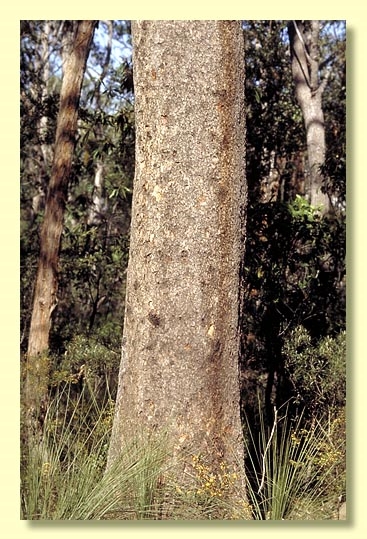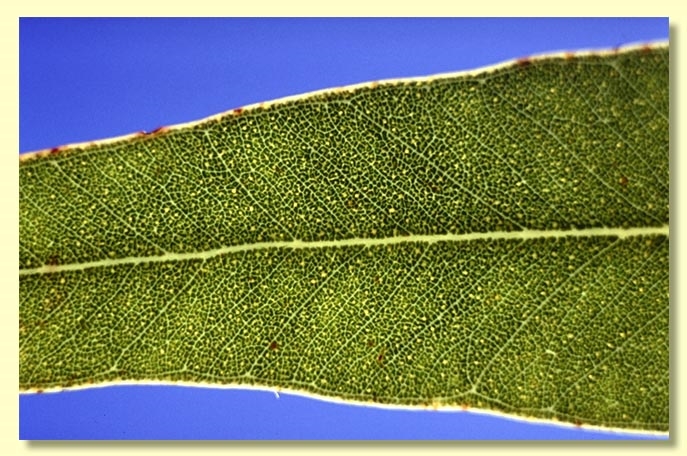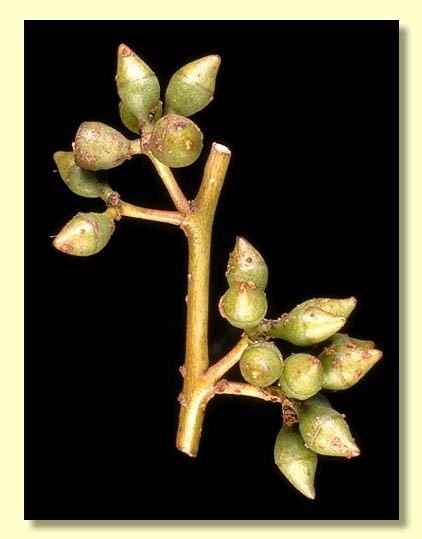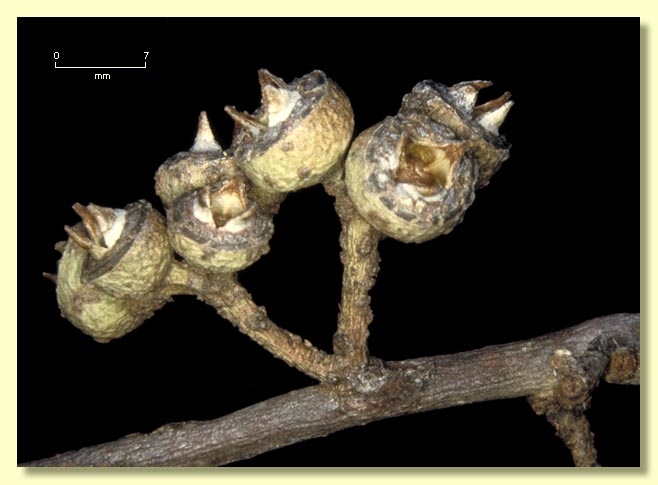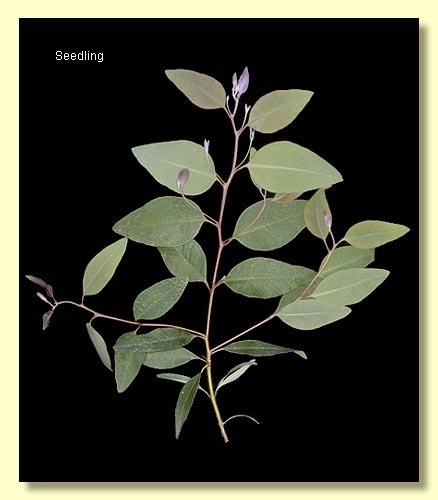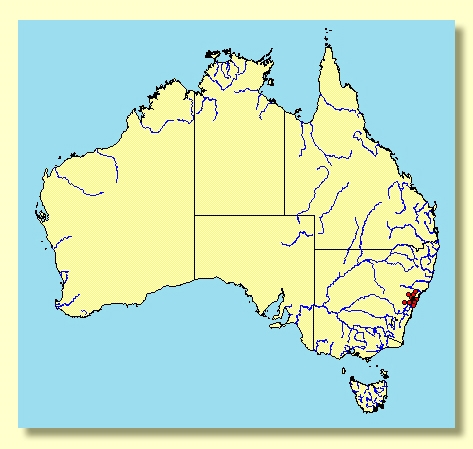Euclid - Online edition
Eucalyptus squamosa
Eucalyptus | Symphyomyrtus | Bisectae | Destitutae | Squamosae
Eucalyptus tereticornis var. squamosa (H.Deane & Maiden) Maiden, Bull. Herb. Boissier ser. 2, 2: 574 (1902). T: National Park, NSW, 6 Jan. 1891, J.H.Maiden s.n.; lecto: NSW, fide J.H.Maiden, Crit. Revis. Eucalyptus 2: 237 (1912).
Bark rough throughout, tessellated, grey and red-brown.
Juvenile growth (coppice or field seedlings to 50 cm): stems round in cross-section; juvenile leaves always petiolate, opposite for 3 to 7 pairs then alternate, ovate, 4.5–10 cm long, 2–6 cm wide, base tapering to petiole, dull, green to greyish green; new growing tips often glaucous but wax not persisting on stems or leaves.
Adult leaves alternate, petiole 1–2.2 cm long; blade lanceolate to falcate, 6–13 cm long, 0.9–2 cm wide, base tapering to petiole, concolorous, glossy or dull, green to grey-green, side-veins greater than 45° to midrib, very densely reticulate, intramarginal vein parallel to and just within margin, oil glands intersectional.
Inflorescence paired in axils, peduncles 0.5–1.3 cm lon; buds 7, 9 or 11, pedicellate (pedicels 0.1–0.4 cm long). Mature buds ovoid (0.6–1.1 cm long, 0.3–0.5 cm wide), green to red-brown, scar present, operculum conical or beaked, stamens inflexed or irregularly flexed, anthers globoid, versatile, basifixed, dehiscence slits separate, style long, stigma tapered, locules 3 or 4, the placentae each with 4 vertical ovule rows. Flowers white.
Fruit pedicellate (pedicels 0.1–0.4 cm long), cup-shaped or hemispherical, 0.4–0.7 cm long, 0.6–0.8 cm wide, disc level, valves 3 or 4, strongly exserted.
Seeds brown, 1.5–2 mm long, ovoid or depressed-ovoid, often pointed at one end, dorsal surface pitted, hilum ventral.
Cultivated seedlings (measured at ca node 10): cotyledons Y-shaped (bisected); stems square in cross-section; leaves always petiolate, opposite for 3 to 6 nodes then alternate, ovate, 4.5–7.5 cm long, 2–4 cm wide, base tapering to rounded, margin entire, apex pointed, concolorous, dull, green.
Flowering has been recorded in March, October, November and December.
A small to medium-sized tree of restricted distribution in subcoastal hills of central New South Wales from Picton to Broke, usually on sandstone. A rough-barked tree with small leaves, it is one of only four eucalypts that have paired inflorescences in the leaf axils. Two of these species, E. regnans and E. fastigata, are tall trees of wet forests and could not be confused with E. squamosa, while the species most closely related to E. squamosa, viz. E. pachycalyx from near Grafton and scattered through Queensland to west of Atherton, is completely smooth-barked. E. squamosa, and E. pachycalyx can scarcely be distinguished on buds and fruits alone.
Eucalyptus squamosa belongs in Eucalyptus subgenus Symphyomyrtus section Bisectae subsection Destitutae because the buds have two opercula, cotyledons are Y-shaped and branchlets lack oil glands in the pith. Within the otherwise Western Australian subsection Destitutae , the two eastern Australian species E. pachycalyx and E. squamosa together form series Squamosae which is further characterized by tree habit and paired axillary inflorescences.

